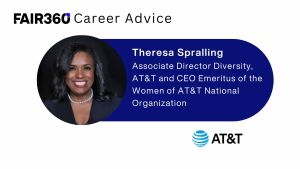From current events to the rise of Hispanic buying power, this Meeting in a Box provides valuable, up-to-date information just in time for National Hispanic Heritage Month.
Contributors: Keka Araujo and Christian Carew
This Meeting in a Box tool is designed for distribution to all employees. You may use portions of it or all of it. Each section is available as a separate PDF; you can forward the entire document or link to it on Fair360 Enterprise; or you can print it out for employees who do not have Internet access.
Sept. 15 – Oct. 15 is National Hispanic Heritage Month, the perfect time to increase your entire company’s awareness of the very diverse group of people called Hispanics or Latinos; their contributions to U.S. business, government and society; the importance of understanding immigration issues; and the culturally competent way to recruit, retain and engage Latino employees.
We are supplying a Timeline of legislation and events impacting Latinos and their achievements in the United States and Facts & Figures demonstrating Latino advancement (and opportunities) in government, education, business, sports and entertainment. This information should be distributed to your entire workforce and also should be used by your Hispanic/Latino employee resource groups both internally and externally as a year-round educational tool.
[CLICK HERE to download a PDF of the full Meeting in a Box.]
1. Timeline
We recommend you start your employees’ cultural-competence lesson on Hispanics/Latinos by using this Timeline, which documents discrimination and oppression of different Latino groups in the United States as well as achievements. It references the remarkable surge in immigration in recent years and its impact on U.S. society as well as the Hispanic/Latino population itself.
Discussion Questions for Employees
Which types of Latinos/Hispanics are most prevalent in your employee population? Do you understand the battles they and their predecessors have fought to live and work here?
Discuss the different experiences of immigrants from Cuba, Puerto Rico, Mexico and other places.
The influx of immigrants into the United States is changing education, healthcare, housing and the job market. How does this make you (individual employee) feel? Do those feelings carry over into the workplace in any way?
Why are “firsts” important to note? What other barrier breakers have you witnessed in your lifetime?
This is a personal discussion designed to help the employee note other barrier breakers historically. This discussion can be further explored after the Facts & Figures section below is discussed.
2. Facts & Figures
After discussion of the Timeline, the next step is to review available data and understand how, why and where Hispanic/Latino population growth impacts your business.
The data we have chosen to present here represents information of relevance to corporate America, such as education (available labor pool), buying power, and progress in gaining executive and management positions. Where applicable, national data is compared with Fair360, formerly DiversityInc Top 50 data to show what progress the leading D&I companies are making.
Discussion Questions for Employees
As Baby Boomers retire, the need for skilled workers in the United States is intensifying. The Hispanic/Latino population is growing rapidly yet education dramatically lags other groups.
How can your company—and you personally—create more awareness of the value of education in the Hispanic/Latino community? How can your company—and you personally—mentor and teach young Hispanics/Latinos and steer them to careers such as yours?
Should employees who speak Spanish (or another language) be allowed to use that language in the workplace when conversing with each other?
How does it make you feel when people in the workplace talk in a language you don’t know? How can your resource group make people feel more included and more willing to be social with people from other demographic groups?
Why are there so few Hispanic/Latino CEOs and senior executives in corporate America? How can your company/organization encourage Hispanic/Latino managers to stay and assume more responsibilities?
What cultural barriers do you think get in the way of Hispanics/Latinos moving up? How critical is it to have role models in an organization?
















